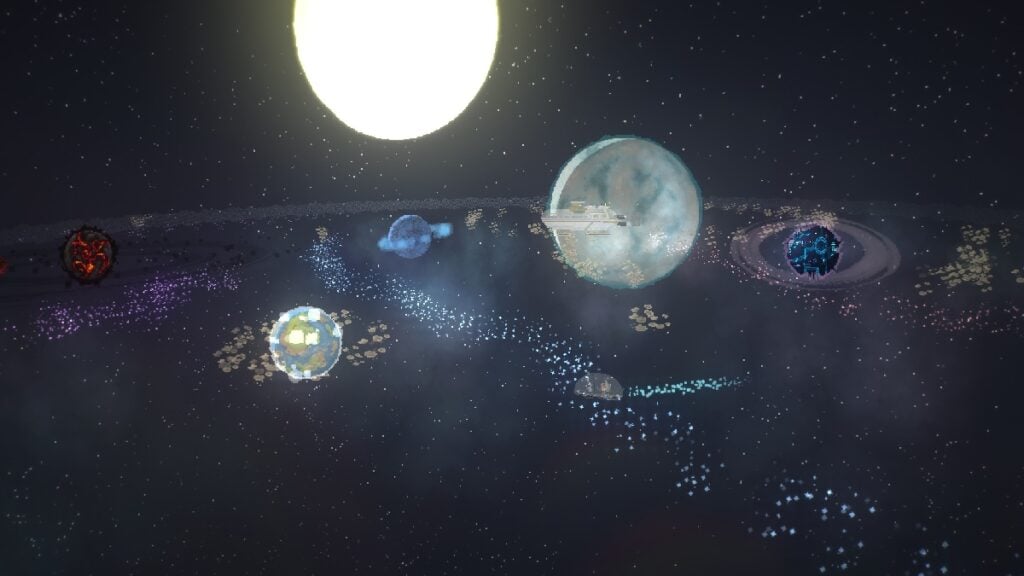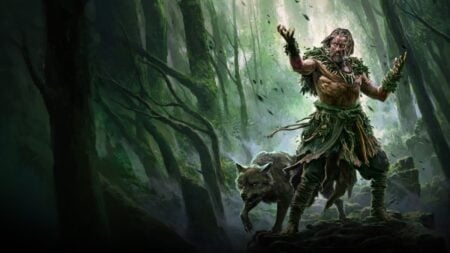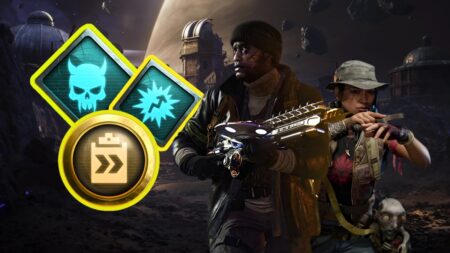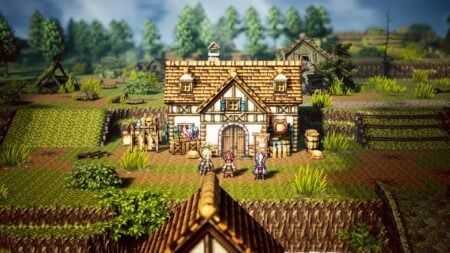Skip To...
It’s more than just the big companies focusing on making great sci-fi stories like Star Wars Outlaws or Starfield. Several indie developers like the adventurous explorer and programmer Sam Enright are trying to carve out a space for themselves in the galaxy. His passion for the universe, sci-fi, and retro RPG led him to create Beyond Galaxyland as a love letter to all these topics.
I didn’t know what to expect from Beyond Galaxyland, but the story takes off quickly and comes dangerously close at hyper-flight speed to being one of the greatest indie video games of the year. This space adventure is packed with mechanics and systems from other titles or movies I love, such as monster capturing, ship piloting, turn-based combat, and much more. It isn’t easy to summarize all Galaxyland offers to the true adventure-seekers.
The Launching Pad
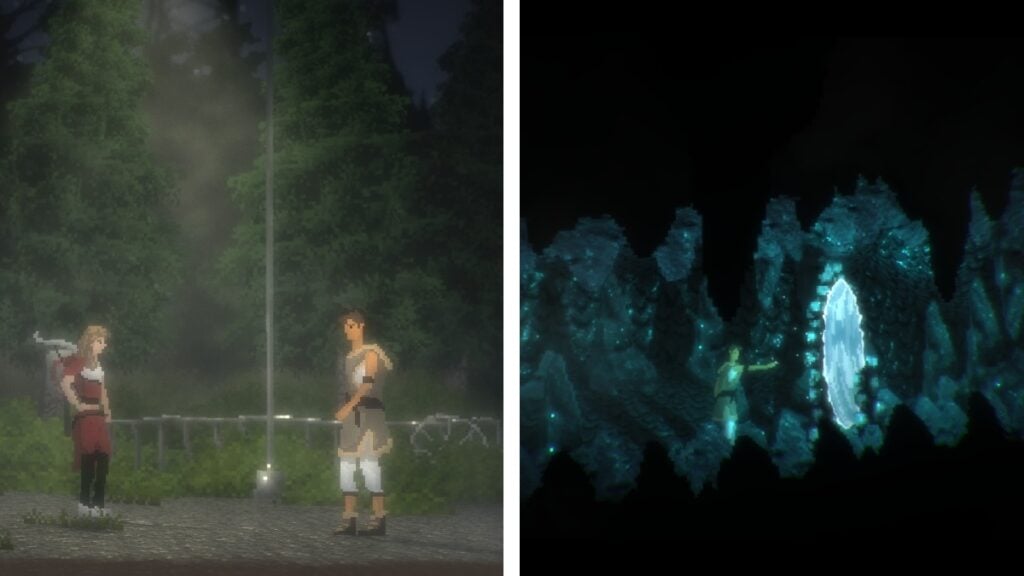
In this story, you hardly get any rest stops; even the beginning is abrupt. You start as Doug, arriving at his home from a play-along with his friend Rosie. She accompanies Doug home to meet our guinea pig, Boom Boom. Doug enters the house briefly to see his parents and goes out again with Boom Boom. To our surprise, when our protagonist came out, Rosie was gone, and in her place was a creepy guy with glowing parts who began to chase Doug. Trying to run for his life from this being, Doug falls through a tunnel into a portal.
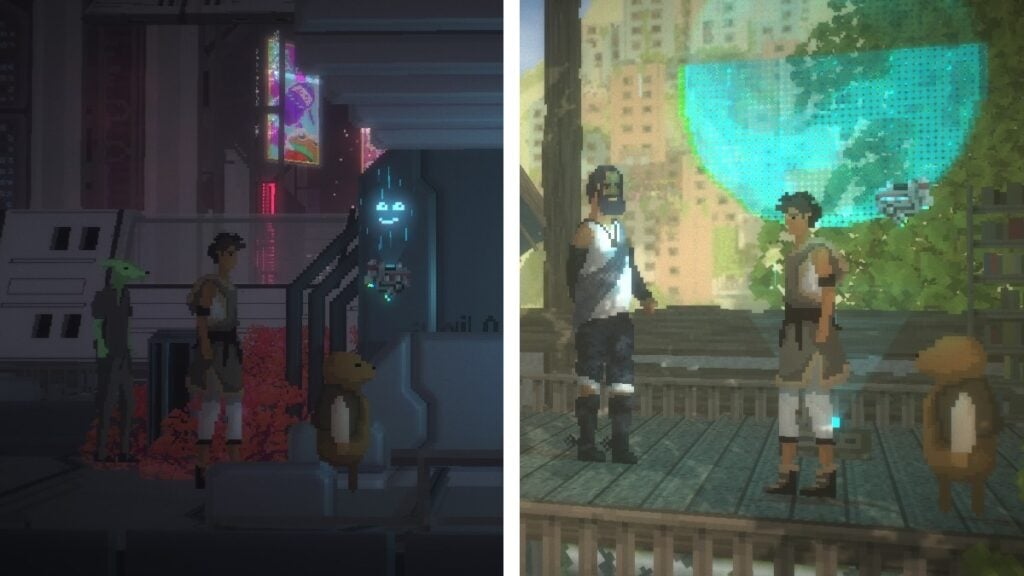
Without warning, Doug wakes up suspended mid-air in a strange place with two robots. These robots are tactless as they announce that the Earth no longer exists, nor does anyone Doug knows. But looking on the bright side, according to these same robots, their company DreamCore is like Noah’s ark, saving other races from The End when it destroys their planets. DreamCore also relocates these species to their conglomerate of planets where they are best suited. It’s kind of like a mega zoo of aliens. However, most living beings in this zoo have a strong stereotype of humans, finding them “amusing” because of their illogical emotions or because they are dangerous.
DreamCore may sound very charitable, but many rescued species believe DreamCore is lying. No one has access to evidence of the destruction of their planets, and since they are stranded in their new homes, no one can verify it. So, in his first days, Doug goes from trying to adapt with the help of MartyBot to trying to get back to Earth. Then, he ends up with some shady companions that leave him stuck in a bigger mess. While sad, I thought the story would be about Doug becoming a space adventurer along with his team of unique and memorable characters. Only to see how Beyond Galaxyland quickly takes a plot twist into a drama filled with betrayal, secrets, and the struggle to survive in space.
A Galaxy Brimming With Gameplay Systems
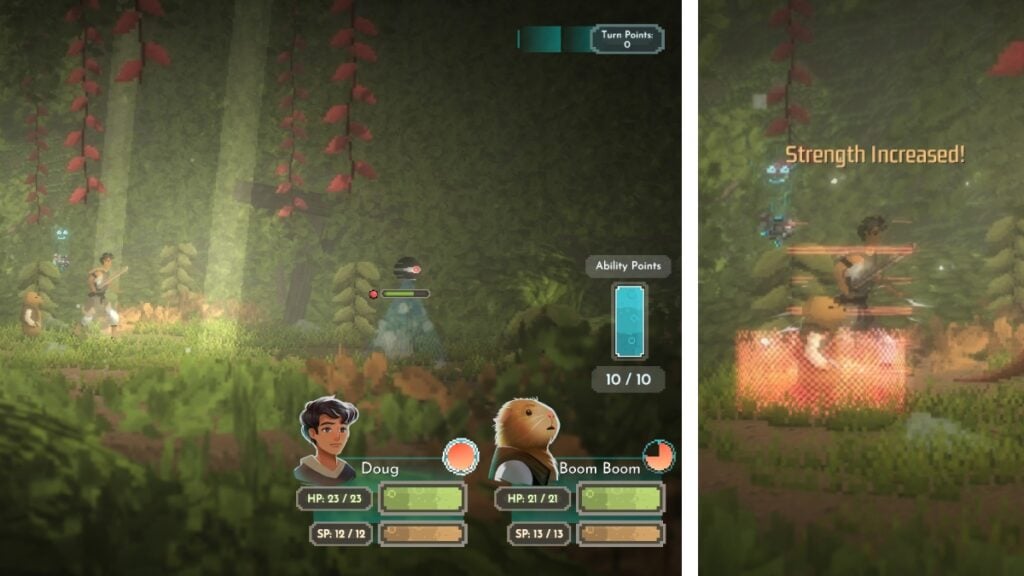
In Beyond Galaxyland, the first thing you notice about the gameplay is the RPG features, which allow you to find items and weapons to upgrade your build. Doug starts with a wooden sword, and as you level up, the enemies will get more challenging, so soon, you can upgrade to a stone sword. Somehow, Boom Boom, who becomes a “smarter” being with barely any awareness, has a blaster. Also, with some equipment, you can upgrade the blaster to shoot all enemies or improve its CRIT DMG. You will also find potions to heal, revive, cure poisoning, or some other condition inflicted by an enemy.
Combat is turn-based, but they have a system of Ability Points (AP) and Normal Attacks. For example, Doug’s Normal attacks, like his hitting with his sword, will help gain AP for the party. With enough AP, Doug can do a Slash that affects all enemies. You can take in your team up to three characters and fight against three enemies; the turn appears as a “clock” next to the icon of each character. What I love most about Beyond Galaxyland is its Defend mechanic, which allows you to avoid an attack or minimize the HP loss from the hit. Also, each enemy has a different attack timing or can hit twice with the same attack.
Speaking of enemies, you can prepare to fight before combat by analyzing them with your Scan ability, which works like a camera. Just point and shoot to see the name, life, and how easy it is to catch that monster. That’s right; Doug can capture them like Pokemon and spend a turn in battle to summon them. The creatures have different abilities; some can attack only one turn, and others improve your stats.
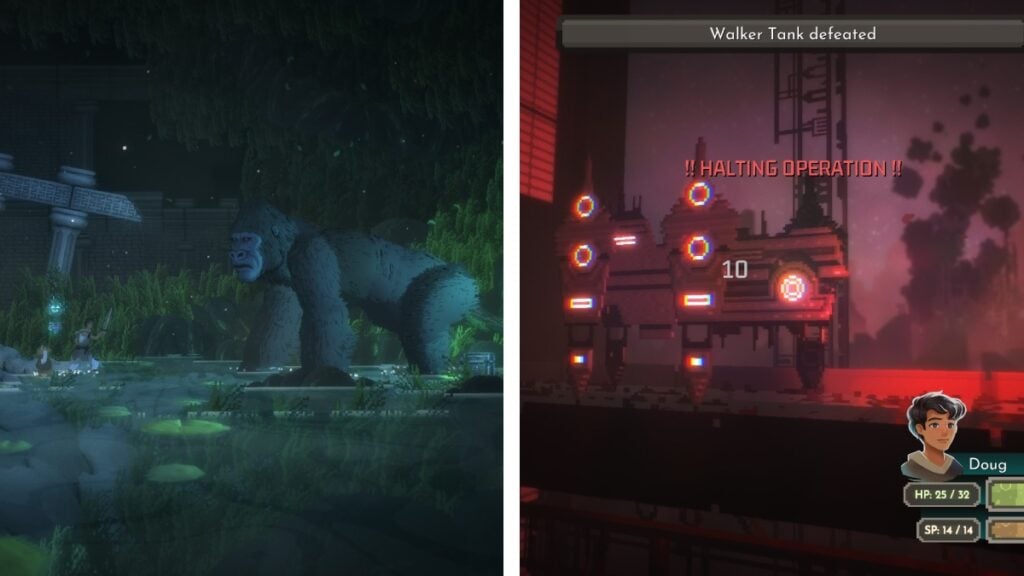
Beyond Galaxyland also has epic battles against colossal enemies, and you must defeat them with your entire team. Some of these enemies have attacks you avoid, and some of them have a shield you must eliminate first. The bosses will often not let you use Scan before the fight, but you can do it with Doug using Scan APs, but you will lose that turn. However, this ability is advantageous for seeing the boss’ HP bar and verifying whether you can add some of these elite enemies to your collection.
Another aspect that I loved is the variety of levels and systems. It depends on the planet you visit, like one with ruins where I had to solve puzzles to reactivate the energy. The boss of this base was a giant gorilla with poisonous skills, as it was full of nature and vegetation. When I arrived on a more modern planet, I had to use access cards; the environment was more cyberpunk-ish, with secret fight clubs, bars, and even gangs. I had to infiltrate a base here, but the security system discovered me. First, Boom Boom had to shoot at robot explosives to protect Doug. Then, I had to dodge laser beams while being chased by an attack robot, like in a movie.
Left Me With Starry Eyes
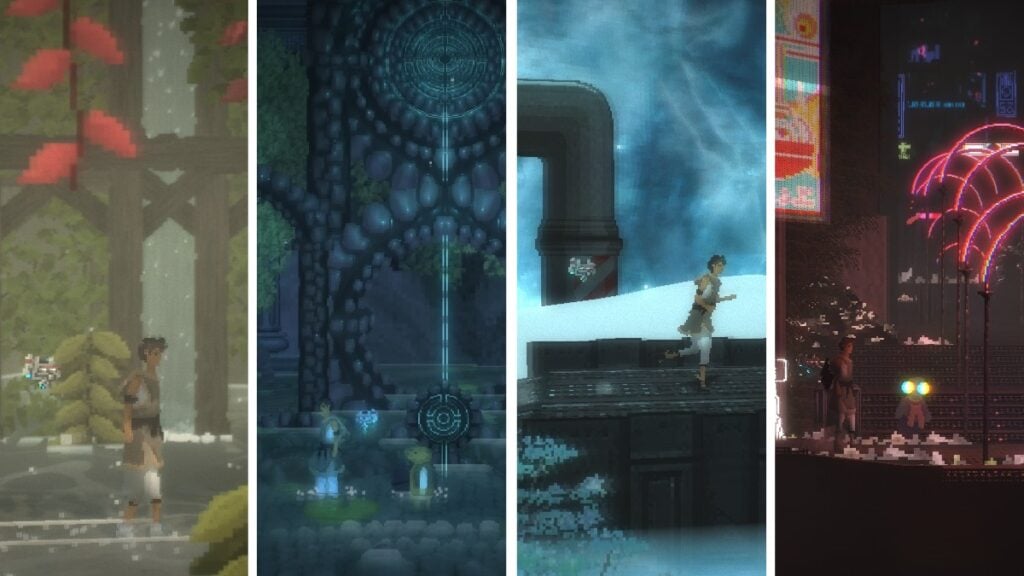
The variety Beyond Galaxyland offers also lies in all the planets you can visit. Each one has its own enemies, music, mechanics, and even weather that obeys a specific theme. However, variety does not equal loss of cohesion or coherence. I mean that it has harmony, that they belong to the same universe and are not super different areas pasted together as if they were a collage. It offers variety and forces players to adapt to each particular situation, similar to when they visit a new location in Star Wars and face specific threats, like the cold of Hoth or dealing with Jawas on Tatooine.
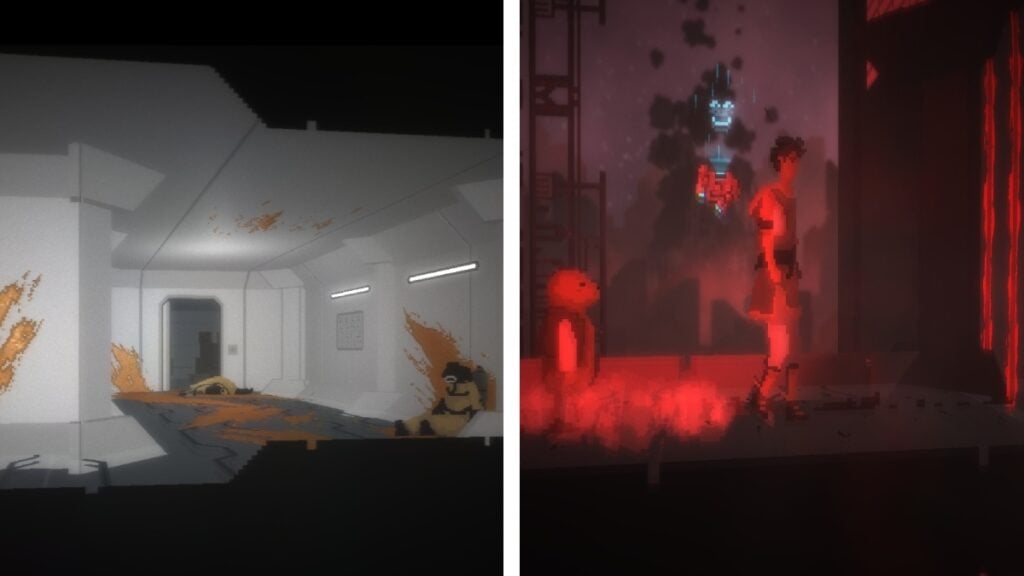
Also, although it looks like another retro pixel art game, the 2.5 enhances the look of this galaxy. This technique is masterful when using so many movements and camera shots. For example, when you face an enemy, a Dutch angle appears, tilting the screen and denoting the danger of the scene. When facing a threat, the change of colors and lights is a chef’s kiss. Beyond Galaxyland is not only a videogame; it has many elements that achieve a cinematic feeling.
Over the Moon
I started Beyond Galaxyland believing it would be another retro turn-based RPG game. Unwittingly, I programmed my mind to play it slowly and pass it by. I was SO wrong. To my surprise, within minutes, everything took a bizarre turn down into a spatial rabbit hole. I completely forgot the track of time and ended up fully immersed in the story. The comparisons of delicate issues in Galaxyland to our world surprised me, such as the stereotypes and segregation between alien races and even, in some cases, reached the point of racism.
It astonishes me that the work behind Beyond Galaxyland belongs to only one person, Sam Enright. I am convinced that Sam knew exactly what they were doing from the beginning and that they have much multi-disciplinary knowledge of video games and film production. While there are a few UI elements I didn’t like, if the developer could see me, I would give them a standing ovation for a story that gave me everything I love in a single game.
Review copy provided by Publisher.
Beyond Galaxyland (PC Reviewed)
Beyond Galaxyland is an unparalleled adventure made by a single developer that matches and even surpasses the quality of many big games on the market.
Pros
- Variety of cohesive gaming systems
- Different worlds to visist with a great traveling mechanic
- Stunning cinematographic environments and shots
Cons
- Confusing UI elements

